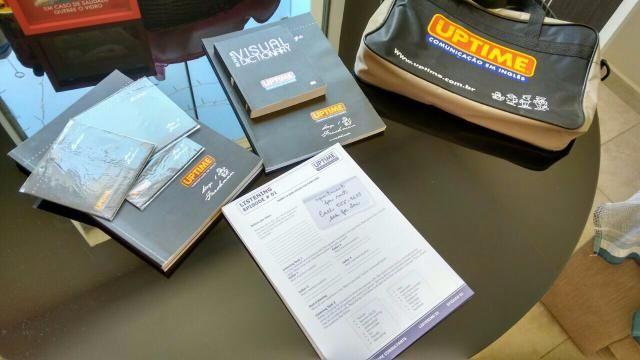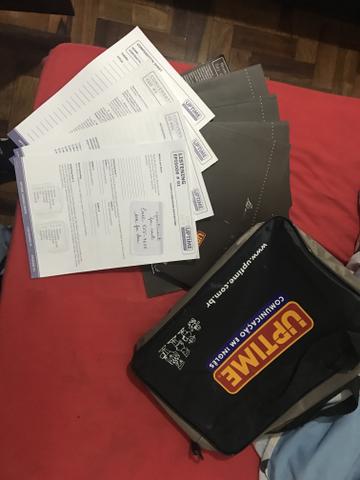고정 헤더 영역
상세 컨텐츠
본문
(Parte 4 de 6) DIODE TEST. Set the range selector at selected range position – X1K for 0 – 150 µ A, for 15mA, X1 for 0 – 150 mA test;. Connect the diode to the tester:.
For IF (forward current) test connect the “N” terminal of the tester to the positive polarity of the diode and the “P” terminal to the negative polarity of the diode. For IR ( reverse current) test, reverse the connection;. Read IF or IR one the LI scale provided;. Read the linear (forward) voltage of the diode on the LV scale while testing IF or IR.

Electronic Circuits Introduction This unit introduces you to electronic circuits and explains the meaning of current, voltage and resistance. You will find out about Ohm’s equations and about some of the components used in building electronic circuits. Shining a light Have you ever taken an torch to pieces to find out how does it work?
1 below, which shows the arrangement of parts inside a torch. 1 Why did the designer of the torch choose this particular combination of materials?. The metal parts must conduct electric current if the torch is to function, but they must also be able to stand up to physical forces.
The spring holding the cells in place should stay springy, while the parts of the switch must make good electrical contact and be undamaged by repeated use. Which materials used in making a torch are conductors and which are insulators? ( ) plastic ( ) copper ( ) tungsten (lamp filament) ( ) glass (outside of lamp) Drawing a circuit diagram A different way of describing the torch is by using a circuit diagram in which the parts of the torch are represented by symbols. 2 there are two electric cells (“batteries”), a switch and a lamp (the torch bulb). The lines in the diagram represent the metal conductors which connect the system together. A circuit is a closed conducting path.
In the torch, closing the switch completes the circuit and allows current to flow. Torches sometimes fail when the metal parts of the switch do not make proper contact, or when the lamp filament is “blown”. In either case, the circuit is incomplete.
The diagrams show different arrangements of cells, switches and lamps. 3 Current An electric current is a flow of charged particles. Current is sometimes carried by positively charged particles, but inside a copper wire, current is carried by small negarively charged particles, called electrons. Metals, such as copper, contain free electrons, which drift in rangdon directions as shown in Fig. 4 Voltage Each cell provide a push, called its potencial difference or voltage. This is represented by the symbol V, and is measured in volts, V. Sometimes, you will want to measure voltages in thousands of a volt, or milivolts, mV.
Typically, each cell provides 1.5 V. If cells are joined together one after the other, they are said to be connected in series. Two 1.5 V cells connected in series provide 3V, while three cells provide 4.5 V. 5 Resistance If a thick copper wire is connected from the positive terminal of a battery directly to the negative terminal, you get a very large current for a very short time. In a torch, this does not happen.
Part of the torch circuit limits, or resists, the flow of current. Most of the circuit consists of thick metal conductors which allow current to flow easily.
These parts, including the spring, switch plates and lamp connections, have a low resistance. The flow of current through the filament causes it to heat up and glow white hot. Lamp filaments are usually made of the metal tungsten because of its very high melting point. In hair, the filament would quickly oxidize.
This is prevented by removing all the air inside the glass of the lamp and replacing it with a non-reactive gas. Ohm’s equations The relationship between current, voltage, and resistance was discovered by Georg Ohm, who published his results in 1827. Ohm made his won wires and was able to show that the size of an electric current depend upon their length and thickness. The current was reduced by increasing the length of the wire or by making it thinner.
Current was increased if a shorter thicker wire was used. In addition, larger currents were observed when the voltage across the wire was increased. From experiments like these, Ohm found that, at constant temperature, the ratio of voltage to current was constant for any particular wire, that is: Where, R = resistance, V = voltage and I = current. Ohm’s Law states that, at constant temperature, the electric current flowing in a conducting material is directly proportional to the applied voltage, and inversely proportional to the resistance. Rearranging the formula gives two additional equations: and These simple equations are fundamental to electronics and, once you have learned to use them effectively, you will find that they are the key to a wide range of circuit problems.
You are going to need these equations, so learn them now. Did you know? Light bulbs The lamp filament was first invented in 1860 by a British physicist, Sir Joseph Swan.
When electric current passes through a thin filament of conducting material, the filament heats up and, if the current is large enough, the filament becomes first red hot and then white hot, or incandescent. In air, this effect is short-lived because the filament burns up and breaks.
Swan had the idea of enclosing the filament in a glass container, preventing oxidation by removing the air inside the container using a vacuum pump. These early experiments suggested that a useful light source was possible, but Swan did not have as sufficiently powerful vacuum pump. Years later, Swan tried again using a better vacuum pump.
In 1878, he has successful in demonstrating a true incandescent light bulb. The American Thomas Edison demonstrated a similar lamp in 1879. However, his real contribution was to develop not just the light bulb but the whole concept of electric power into a practical, safe and e economic system. In September 1882, the first commercial power station went into operation, providing light and power to customers in part of Manhattan.
The electric age had begun. Edison tested thousands of different filament materials. The first commercial lamps had filaments made of carbon. This was later replaced by tungsten, a metal with a particularity high melting point. In modern filament lamp, a very fine tungsten wire is coiled in a tiny spiral. This spiral is coiled again to make a “coiled coil”.
This arrangement concentrates the heat produced as current passes through the wire, causing the filament to heat up and reach incandescence much more quickly. The space inside the lamp is filled with a non-reactive gas, usually an argon/ nitrogen mixture. The outline of most parts of the world is identified clearly by city lights.
Only recently have people stared to worry about all the energy used in lighting and how it affects global warming. The filament lamp is not very efficient and converts just 10 per cent of its energy into light.

The rest is wasted as heat. Energy efficient light bulbs use a different technology and use three to four times less energy for the same light output. Every home should have them! The race is on for lighting manufacturers to find ways of making lighting more energy efficient. Huge savings could be made. It´s possible that in a few years you will be albe to light your house using super-efficient giant LEDs (light-emitting diodes). Parallel lamps Lamps can be connected in series or in parallel.
If you connect the lamps stay the same brightness however many lamps you add. This is because the voltage across every lamp is the same. In your house the lamps are connected in parallel; this means that even if you have all the lights on, the lights do not dim. Batteries Batteries are a source of electrical energy. The energy is stored as chemical energy and is converted into electrical energy as it is required. The more energy a battery stores the longer it will last.
Different types of batteries have different voltages. The voltage is a measure of the strength of the battery. The higher the voltage, the brighter the bulb and the faster the motor.
As a battery runs out its voltage gradually drops. Many batteries have a voltage of 1.5 V. For most lamps this is not enough, so often two batteries are connected in series. This doubles the voltage to 3 V.
Uptime Electronics Cnc Repair
Fuses Electricity can be dangerous if you short a battery or the supply in your house a very high current flows. Sometimes the wires which carry the current heat up and melt. This may cause a fire or an explosion. Fuses protect against fire caused by electrical faults. When the current gets too high, fuses burn out and break the circuit. This stops the wires from burning.
After a fuse burns out, a qualified person must find the fault before the fuse is replaced. Electric Circuits Electricity is a very useful type of energy. The beauty of electricity is that it can be generated in one place and used in another place. For example, the lamps in your house could be lit by electricity generated by solar panels on the top of a hill.
Electric current can flow along move around circuits (loops) like the chain moves on a bicycle. This is why batteries have two terminals.
Current flows out of the positive terminal and into the negative terminal. If there is a break in the circuit then current cannot flow.
Inductor An inductor stores energy in an electromagnetic field created by changes in current through it. Its ability to oppose a change in current flow is called inductance, L, and is measured in henrys. An inductor can have any value form µH to H. Electric motors Electrical energy can be converted into mechanical energy using an electric motor. Electric motors are used in many products.
One of the most important uses of the elecrric motor is in electric cars. (Parte 4 de 6).




